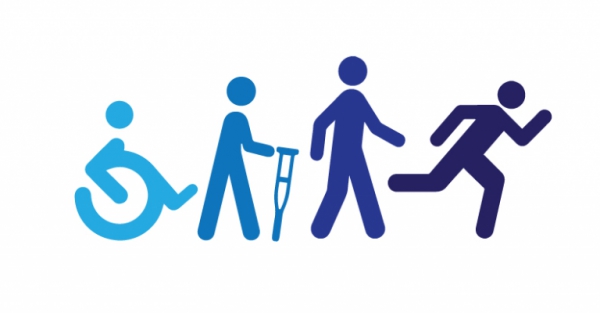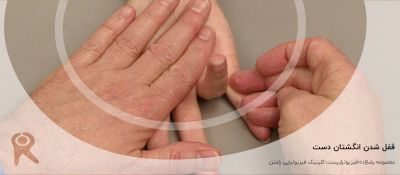Mechanism of Injury / Pathological Process
The connective tissue forming a compartment is not pliable, so when bleeding or swelling occurs within the compartment, the intra-compartmental pressure rises. Normally a non-contracting muscle contains a pressure near zero. If the pressure rises up to 30 mmHg, the vessels will be compressed, resulting in pain and a decrease in blood flow. Lymphatic drainage will activate to prevent increasing interstitial fluid pressure. Once the effects of lymphatic drainage have reached their maximum, the pressure within the compartments will cause physiological defects, such as a nerve dysfunction and deformation.
Haemorrhage or oedema causes the interstitial pressures within the soft tissues to increase, creating possible ischemia by loss of capillary refill. Ischemia starts when the local blood flow can’t fulfill the metabolic demands of the tissues. When a body part is not provided with blood for more than eight hours, the damage is irreversible and may lead to the death of the concerning tissues.
Clinical Presentation
Symptoms of Chronic Compartment Syndrome
Obtaining an accurate patient history is vital, due to the objective examination often not showing much of note. In a typical case, the patient will present with pain in a compartment of the leg, at the same time, distance and intensity of exercise. The pain shall continue to increase until it becomes unbearable and the patient stops exercising, causing the pain to subside with rest.
- Pain on palpation of involved muscles
- Pain with passive stretching of muscles
- The feeling of firmness of involved compartments
- Muscle herniation can be palpated in 40-60% of patients with compartment syndrome (Usually palpated over anterior tibia)
- Gait analysis may show excessive overpronation
- A neurological exam may show weakness and numbness of the affected compartment
Diagnostic Procedures
The only way to diagnose a compartment syndrome is to measure the pressure within the compartments of the affected limb.
Intra-Compartmental Pressure Monitoring (ICP)
A catheter connected to a transducer is usually introduced into the compartment to be measured. Measurement of the compartment pressure can be performed at rest, as well as during and after exercise. With the acute syndrome, typical ranges are from 30-45 mmHg at rest. This objective method can provide a continuous recording of pressure measurement for between 16 and 24 hours.
The normal ICP ranges from zero to 10 mmHg. When the pressure is near 30 mmHg below the diastolic pressure, a surgeon will perform a fasciotomy. Time is a very significant parameter, but very difficult to measure. Decompression within 6 hours will result in a full recovery. If more than 12 hours pass without any medical treatment, long term disability is most likely.
Less Invasive Measurement Techniques
- Laser Doppler ultrasound
- Methoxy isobutyl isonitrile enhanced magnetic resonance imaging (MRI)
- Phosphate-nuclear magnetic resonance (NMR) spectroscopy
Outcome Measures
- Lower Extremity Functional Scale (LEFS)
- Foot and Ankle Ability Measure (FAAM)
- Visual Analogue Scale
- Patient Specific Functional Scale
Management / Interventions
In the event of a diagnosis of Compartment syndrome (when there is a intra-compartment pressure of >30 mmHg, an urgent fasciotomy is recommended, Raised ICP threatens the viability of the limb and CS (compartment syndrome) represents a true medical emergency. Thus, the need for decompression by removal of all dressing down to skin, followed by fasciotomy- Surgical opening of the fascia around the muscles to make more place for the structures inside.
Experimental evidence has shown:
- The circular cast can substantiate the adverse effects of raised ICP
- Splitting of the cast on one side leads to an average fall in ICP 30%
- Splitting of the cast on both sides leads to an average fall in ICP 65%
- Complete removal of the cast reduced the pressure by another 15%
In these particular cases which the diagnosis is being considered and in those in whom resuscitation is proceeding, the following steps should be performed:
- Ensure the patient is normotensive, as hypotension reduces perfusion pressure and contributes in the anoxemia and the consequent tissue injury.
- Remove any circumferential or constricting bandages (even bloody bandages).
- Maintain the limb at heart level as elevation reduces the arterio-venous pressure gradient.
- Give supplemental oxygen to ensure optimal saturation.
Several surgical approaches have been tried. The surgical goal is one and only; the adequate decompressive for the viability of the limb or the prevention of permanent disability. The cosmetic or the location and lengths of incisions should not be considered. In treatment of CS there is no place for short cosmetic incisions. Surgical incisions less than 15cm may be lead in inadequate decompression.
After decompression, delayed primary closure can be performed when swelling has subsided, however this may be difficult or unachievable due to skin retraction. Various methods and materials have been described using the elastic properties of the skin to aid wound closure. If the wound edges cannot be approximated, skin grafting may be required.
Intamedullary nailing may increase ICP, fact that was taken into consideration seriously at the first years of nailing application and it was thought that nailing should be delayed for up to 7 days. However further research has shown that during reaming the pressure may rise to 180 mmHg, but it falls back to normal after removing the reamer. Similarly, the application of traction also increases the pressure but this immediately drops with release of the traction. Controversy still exists if monitoring should be performed during intamedullary nailing. Mcqueen et al suggested routine monitoring if facilities are available. Others have suggested that this may lead to over treatment and unnecessary fasciotomies.
Differential Diagnosis
These common pathologies may give the same pain characteristics or symptoms in the lower limbs:
- shin splints (medial tibial stress syndrome)
- stress fractures
- fascial defects
- peroneal nerve entrapment
- popliteal artery entrapment syndrome
- claudication










